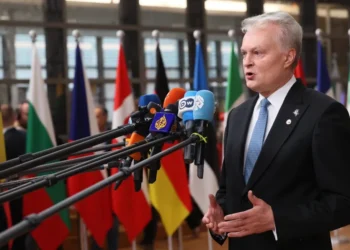U.S. aid cuts trigger silent health crisis in Afghanistan
July 24, 2025 – 5:10 PM PST
In eastern Afghanistan, a grieving mother clutches her lifeless infant—just one among many victims of a deepening humanitarian crisis. As the United States withdraws over $1.7 billion in aid, hospitals are shutting down, medical supplies are vanishing, and access to care is disappearing for millions. The result: a growing wave of preventable deaths, especially among women and children.
U.S. ends $1.7 billion in humanitarian support
The Biden-to-Trump policy shift has dramatically reshaped America’s role in global aid. In Afghanistan, the recent cuts halted funding for doctors, nurses, medicine, and food programs—lifelines in a country already battered by war and economic instability.
At Nangarhar Regional Hospital, the impact is immediate. Baby Mohammad Omar, just a year old, died in an overcrowded ward where U.S. dollars once paid for lifesaving staff and supplies. Families now pay out of pocket—if they can.
“We’ve seen infant mortality rise by at least 3% since the funding stopped,” said Dr. Anidullah Samim, a pediatrician at the hospital. “We are barely holding on.”
Who made the call—and why
The aid cuts were part of the Trump administration’s renewed “America First” strategy, aimed at reducing foreign spending. Secretary of State Marco Rubio has defended the move, saying U.S. dollars must align with national interests. Elon Musk even joked about “feeding USAID into a wood chipper” during a policy summit—reflecting a wider shift in Washington.
Congressman Tim Burchett, a key supporter of the “No Tax Dollars for Terrorists Act,” claims that aid was being funneled to the Taliban. But watchdog group SIGAR found the figure far lower—around $11 million over several years, not the $40 million weekly as claimed.
On the ground: lives lost and clinics closed
Since the Taliban retook power in 2021, basic services have deteriorated. Afghanistan’s healthcare system now teeters on collapse. Former U.S.-funded clinics are abandoned. Medicines are scarce. Families trek for hours to find functioning hospitals—only to be turned away.
Real stories from a nation in crisis:
- Mohammad’s final breath: In a hot, packed hospital room, the one-year-old’s life slipped away. His mother fainted from grief. Nurses wept beside her.
- A childbirth that ended in tragedy: In a rural village, a pregnant woman died giving birth at home. The clinic that once served her had closed weeks earlier.
- Mental health toll: A young female psychiatrist lost her job after USAID’s shutdown. One of her teen patients died by suicide shortly after losing access to care. “Now I’m home, depressed too,” she said.
- Negar’s heartbreak: In Takhar province, Negar miscarried full-term twins. With no clinic nearby and Taliban travel restrictions on women, she never made it to care. “They were alive inside me,” she said quietly.
The Taliban’s stance—and the harsh reality
Taliban leaders claim Afghanistan no longer needs international aid. “The budget is now domestic,” said a government spokesperson. But reports from the ground tell a different story: empty wards, looted medicine, vanishing staff, and rising desperation.
What’s next for Afghanistan’s most vulnerable?
Global researchers warn that without urgent action, more than 14 million people could die in the next five years due to aid cuts—5 million of them children under five. Women face especially bleak outcomes, unable to access reproductive healthcare or emergency services.
While U.S. officials say future assistance will be “more efficient,” Afghan families need help now.
Final thoughts
Afghanistan’s unfolding crisis shows how politics in Washington can ripple across the globe. Aid cuts aren’t just numbers on a page—they’re decisions with life-or-death consequences. Mothers, children, and healthcare workers are left with no safety net.
If this story resonated with you, explore our coverage of global aid policy, Afghanistan under Taliban rule, and women’s healthcare access in crisis zones. Please share or comment—your voice helps amplify theirs.
Source: CNN – The Trump administration claims no one has died due to US aid cuts. Our trip to Afghanistan suggests otherwise
This article was rewritten by JournosNews.com based on verified reporting from trusted sources. The content has been independently reviewed, fact-checked, and edited for accuracy, tone, and global readability in accordance with Google News standards.
Stay informed with JournosNews.com — your trusted source for verified global reporting and in-depth analysis. Follow us on Google News and BlueSky for real-time updates.
JournosNews.com follows Google News content standards with original reporting, verified sources, and global accessibility. Articles are fact-checked and edited for accuracy and neutrality.












